Succurates are a special kind of plants, among which everyone can find something to find something, it is the flower that will be in the soul and will fall forever in your garden. The most common succulent is the plants of the stone rose or molded - a beautiful and amazing plant, which, as if frozen or petrified rose, fits perfectly into any landscape design.
Cacti in the pots on our windowsons - this is a common thing for a long time and will not surprise anyone. But the compositions with a flower of stone roses in the garden is a real miracle. It can be used to create miniature gardens in a variety of items, for example, in old boots, decorate the garden pots and containers. A stone rose in an open ground is a completely unpretentious plant, landing and care for whom even beginner gardeners will be able to master.
In this article, consider how to plant a stone rose and care for her. We note the important characteristics of popular varieties of this culture.
Features and Description of Stone Rosa
Stone Rose or Moldova is an evergreen long-term succulent, which belongs to the family of Tolstanka. The natural area of \u200b\u200bthe habitat of this plant is the territory of the Caucasus, Asia, Northern and Eastern Europe, where it mounted on mountainous terrain, dry and stony areas, on the outskirts of forests. Because of its so-wide spread in nature, the stone rose has become simply enormous popular among gardeners and landscape designers. This plant has many synonyms names, which differ differently distinguishing features of the appearance of the succulent. You can often hear such names like a stone rose, velvet rose, hunger cabbage, luggage. The name of the stone rose passed due to the incredible similarity of the sockets of this plant with a rose, and stone, because he prefers to grow on stony and mountainous sites. This succulent is called this succulent due to similarity with the cabbage coach usually.
The generally accepted scientific name of the stone rose occurred from the Latin word sempervivum, which translated "always alive". This is due to the fact that the stone rose is capable of surviving in the most difficult conditions. Sockets retain their freshness even with long mail. It is for these qualities and a phenomenal vitality stone rose in the garden is a welcome guest.
This plant has been revered by people for a long time. Europeans in the Middle Ages believed that some types of succulent stone rose could protect the house from the lightning strike. Therefore, the roofs often organized natural landings of this plant. There is even a story that Charles Great himself issued a decree, according to which all residents had to land a stone rose on the roofs of their homes. Now in the species diversity there is one kind of stone rose, which is also called "roofing".
Description of stone rose:
- Stone rose is a perennial evergreen plant, which is a spectacular representative of the entire kind of succulent.
- It is a socket in the shape of a ball that consist of leaves. The socket is the main decoration of the stone rose, it is a rather short stem, on which the leaves are attached along the spirals. In diameter, one outlet can be from 1 cm to 15 cm.
- The leaves of the stone rose are slightly oblong with a pointed end, very fleshy. Some are covered with wax raid, and some are characterized by the downsion.
- Thanks to the omission, the plant captures water drops and delays them inside. This contributes to the fact that the stone rose can survive even in the most arid places.
- Different leaves in color: green, red, pink, brown, silver.
- The flowering of stone rose begins in June or July, depending on the specific plant variety. Undoubtedly, many wonder how the stone rose blooms. From the center of the socket begins to slowly grow thick and fleshy blooming, on the top of which the thyroid inflorescence is formed. This inflorescence consists of star-sized star colors that have different shades: white, pink or yellow. The blooming stone rose has a very pleasant fragrance.
- The stone rose has a very interesting feature - each socket only blooms once in his life, this event is usually happening for 3 years, after which this socket dies off, and young people come to shift.
- Due to the rapidly restored root system, the stone rose easily tolerates the transplant. The rhizome of this plant is different, from strong and powerful to superficial.
- The stone rose is well tolerating frost and drought, being due to this simply indispensable plant for the garden.
A variety of types and varieties of stone roses
To date, there are about 500 different types of stone roses, which include variety varieties. All varieties are so colorful and majestic that they will certainly become a central decoration of the site. In our regions, about 50 species are cultivated, from the range of the varieties of which the head will be spinning at any flower.
- It mounted roofing. This type of stone rose was distributed in Europe. The socket is a spherical, slightly fuzzy shape, which in height can reach 8 cm, and in diameter 20 cm. The socket consists of pointed leaves, which have a bright colors - a green leaf plate with reddish-burgundy tops. The flowering of this type begins in the middle or late summer. Flowers have a reddish or pink shade. In distant times, this species of stone rose was used as roofing material for roofs, hence the name.
- Mountained mountains. This plant is small outlets, which consist of green pointed leaves. Flowers stone rose mountain reddish-pink flowers. At one of the forms of this type of Brown, the flowers have a rather unusual shade - creamy-yellow.
- Caucasian caucasian. This kind of stone rose in the natural area is found in the Caucasus. The socket is a shape of a ball that consists of fleshy, juicy leaves of green, on the tops of which there are hard cilia. It is these cilias that are a distinctive feature. Flowers stone rose Caucasian purple or red-violent star colors collected in the thyroid inflorescence.
- Milk dwarf. The stone rose of this species is a miniature succulent, the socket of which in the diameter is only 2-2.5 cm. The socket is formed by small thick leaves of green with a burgundy top, on which the cilia is located. Flowers a stone rose dwarf red-lilac flowers with a distinct strip in the center.
- Matelated marble. The stone rose of this species is distinguished by the motley color leaves. The socket consists of leaves that have green and red divorces. And at the autumn time almost completely becomes red. The diameter of the socket is 12 cm. Flowers are distinguished by a reddish tint with brighter color around the edge of petals.
- Molded vulfena. Stone rose of small size. The socket in the diameter is only 5 cm and is formed by fleshy and thick leaves of gentle light green. Perfect for the composition, where bright colors prevail.
- Molded cobweb. This very unusual view of a stone rose, which surprises with his appearance. Small sockets that reach approximately 4 cm in diameter are completely covered with the finest silky cob. Do not be afraid, this is not a sign of pests, but the peculiarity of the plant. The socket is formed by green leaves with a reddish-burgundy top. Flowers stone rose purple flowers. If you want to grow this type of plants on your site, it is necessary to transfer it to a balcony or loggia at winter.
- Molded off. This type of stone rose can be found in pine bodies on sandy soils, which are covered with a dense carpet with sufficient large plots of land. Rosettes of spherical, small size, in diameter reach 5 cm. Form with green or light green leaves. It blooms this plant with yellow or green flowers. The stone rose is considered a medicinal plant and serves most often for wound healing.
- Molded Russian. The stone rose of this species in nature grows in Russia in the forests and steppes. Cultivated from the 19th century, however, until today has not lost its popularity. It is small sockets that in diameter are about 5-6 cm. The leaves of green, blooms the plant with yellow flowers.
This is a list of the most popular rock roses on the territory of Russia, which look great in the landscape design of any plot.
Reproduction of stone rose
Stone rose is a very unpretentious plant that can grow in any conditions. In addition, this culture practically does not require the participation of a person in reproduction. A stone rose in France is called a "chickens", as a large number of rosettes are formed around an adult plant, which can be used to breed a stone rose.
Seed reproduction of stone rose
- A stone rose can be multiplied with the help of seeds, but in this case you need to be ready for the fact that young plants will not get part of maternal signs. Most often, this method is used by breeders to remove new varieties of culture.
- Stone rose seeds can be purchased in garden centers, where there is a very large selection of varieties of this plant. If a stone rose is growing on your site and you want to try to grow even with the help of seeds, you can try to collect seeds.
- For the collection of seeds, it is necessary to wait until the adult outlet will appear a flowerclosure. After his flow, you can collect seeds. Just be very neat, this culture seeds are very small, similar to dust.
- Seed seeds need at the end of February. To do this, prepare containers, pots or any plastic cups.
- Fill the capacitance of the soil mixture, which ideally should consist of peat, lime and a small amount of charcoal.
- The soil should be rich and dispel on the surface of the seeds of stone roses. It is not necessary to plunge them hard, since they are very small. Maximum allowed to recess up to 1 mm.
- The optimal temperature for the seedlings of 22-25 degrees. You can put the capacitance on the windowsill, where the maximum of sunlight will fall into seedlings. Just need to be careful because young plants can get a burn.
- After the appearance of seedlings, and this usually happens in a week, you can start watering. Watering should be moderate, but regular.
- After about 2 months, seedlings reach the size when they can be seen in separate cups.
- You can plant a stone rose in the ground in mid-July.
Reproduction of stone rose sockets kids
- The simplest and most reliable way to reproduce a stone rose is the reproduction with the help of child sockets.
- Each adult plant after flowing dies, and in its place a large number of rosettes are formed, which can be used for cultural breeding.
- However, this method is not suitable if there is a landscape composition of a stone rose on your garden plot. Tinging the child outlet, you break the integrity of the composition.
- The plant perfectly tolerates a transplant, so you can select outlets-kids at any time since June-July. The main thing is that the young plant will take care of the onset of cold.
Preparatory work before landing a stone rose
It is a fairly simple and not burdensome to grow an independent stone rose. And if you spent good preparatory work, the planting process itself will seem enjoyable entertainment. During the preparation for landing a stone rose to open soil, it is important to purchase high-quality and healthy seedlings or children of stone roses, as well as pick up on your site the most suitable place.
How to choose a variety and landing material of stone rose
- First of all, you need to pick up the laying of a stone rose that you want to grow on your site. In his choice, rely on the future garden composition and the cold resistance of individual plants.
- Smaller coazeners of stone roses can be attached in small tanks, and high will be perfectly looked along the borders or garden tracks.
- Purchasing Saplings Stamps Roses is needed in specialized garden centers or nurseries who are professionally engaged in rare plants. Here you will definitely buy a seedling of stone rose, and not any other plant.
- The advantage of the purchase of planting material in nurseries is that young plants are already adapted to the climatic conditions of your region and you will not have any problems with the frozen rose on the site.
- Before buying, check the condition of the young plant. It should grow in a small pot and have a healthy look. The leaves should be fleshy and elastic, no wilting is allowed.
Choosing a landing site of stone rose
- Stone rose prefers to grow at open solar sites, as the plant can die from the lack of the sun.
- Choose a place on a green lawn for it, where only various types of stone roses will grow.
- Do not land this culture next to high plants, as the constant shadow for them is destructive.
- For a stone rose, you can pick up a beautiful garden pot or ordinary bucket and put it into the ground half. Thus, it turns out a beautiful garden composition.
- For this plant, you can use all kinds of tanks: from old boots to rubber wheels.
Choosing a soil for landing a stone rose
- The stone rose belongs to succulents, so the soil mixture must be selected appropriate.
- This plant prefers to grow on stony or sandy soils, although perfectly feels perfectly anyone.
- It is best to plant a stone rose on loose and drained land. To do this, in conventional sandy soil you can add fruits and charcoal or clay.
Stone Rose Planting Technology in Open Soil
- Planting young plants in open soil is necessary in June-July. Although many sit down this plant throughout the season, the main thing is that young seedlings will have to root before the onset of cold weather.
- At your chosen area of \u200b\u200bthe soil, it is necessary to remove all weeds that will interfere with the full growth of rock roses.
- In the ground you can plug a little clay for drainage, especially if the soil is clay. This will contribute to the outflow of excess moisture.
- Gently remove a young plant from the pot - this is done by the method of transshipment, i.e. Together with the earthen room.
- It is not necessary to plunge the seedling into the ground, it is enough to press a plant and sprinkle soil.
- When landing, it is important to observe the distance between the seedlings, it should be at least 10 cm, since some instances may have a distribution diameter of 15 cm.
- After landing, a stone rose is to pour.
Stone rose growing agrotechnics in open ground
If you care how to care for a stone rose, I want to answer - in no way. This plant is so non-demanding to growing conditions, which practically does not need to care. The stone rose can be perfectly done without water and feeding and does not need loose and shelter in winter. Just the perfect plant.
- Watering. The stone rose is a succulent, so it does not need excessive watering. This plant can be watered abundantly immediately after landing and during drought. It is impossible to moisten the soil at the plant, otherwise it may have a perniciously affecting it.
- Swimming. In loosening, the stone rose does not need, as it can even grow on rocky soil. The only thing that must be done is to remove weeds that can slow down the development of stone roses.
- Feeding During the landing and the first three years, the stone rose does not need to feed, it can say on its cold-resistant. You can begin to make fertilizers from 4 years and use for this special fertilizer for succulents in half a dose.
- Wintering. Almost all types of stone roses are perfectly tolerated frost, so they do not need shelter. However, there are such species as weed by web, which for the winter must be transplanted into the pots and take into the house.
- Fighting diseases and pests. To pests and diseases, the stone rose or was stable. Occasionally can be damaged by larvae of May beetles.
Using Stone Roses in Landscape Design
Stone rose is an excellent decoration of any garden plot.
- This plant can be planted on floral flower beds, where there are relatively low flowers in different color colors.
- Stone rose can be planted along the garden tracks or borders.
- It looks great for this plant in flower beds, where only different varieties of stone roses are presented.
- With this plant, you can create original garden compositions. District partially old jug in the ground and plant stone roses on the similarity of the flowing fluid. Or take old boots, fill them with soil and put a stone rose - the original design solution.
Photo of stone rose
Stone rose or mounted - unpretentious and absolutely not a demanding plant that can help you create just incredible garden compositions. This is a truly plant for those who do not like to mess around in the ground.


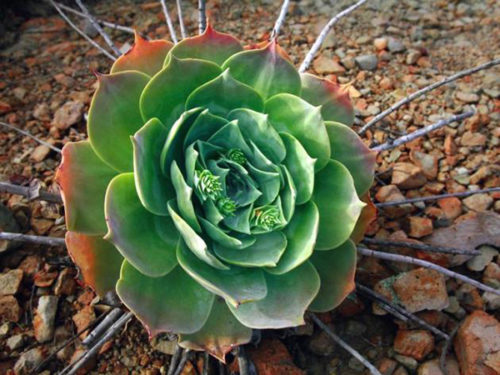
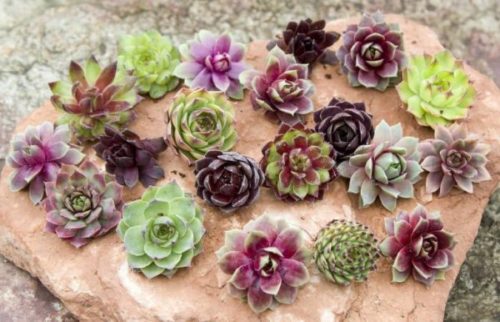
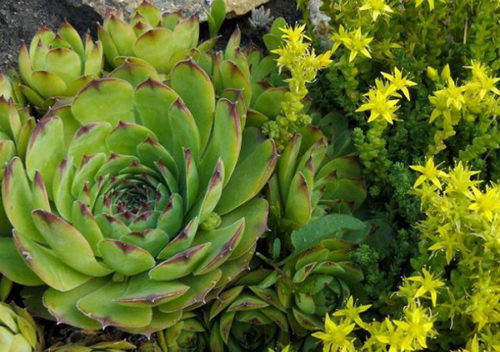
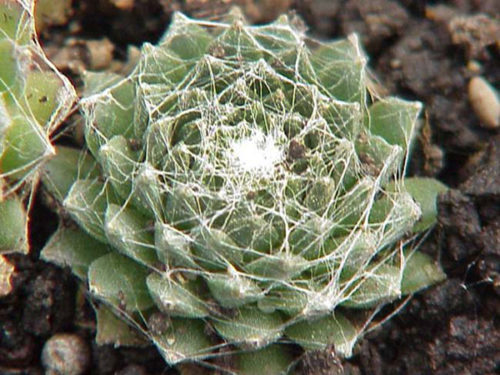
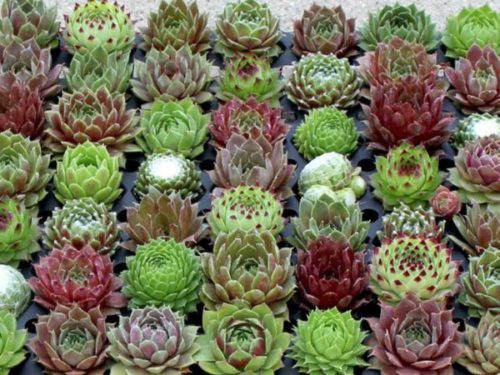
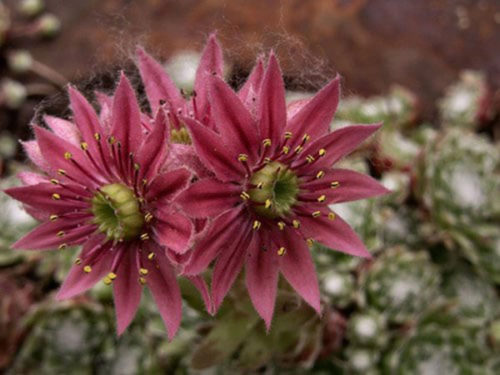
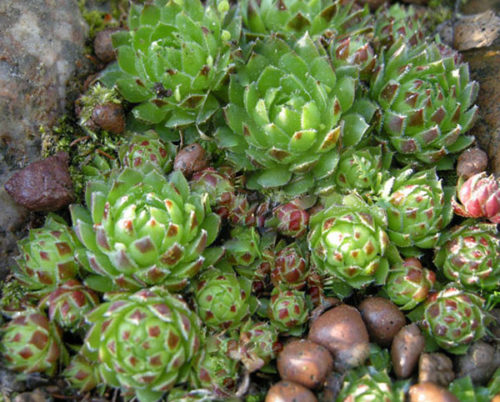
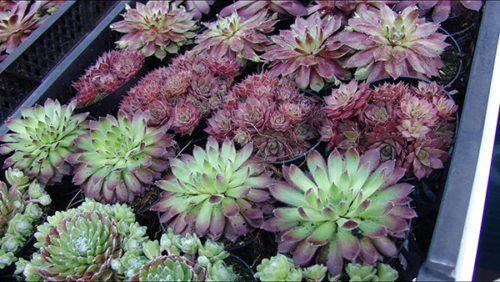

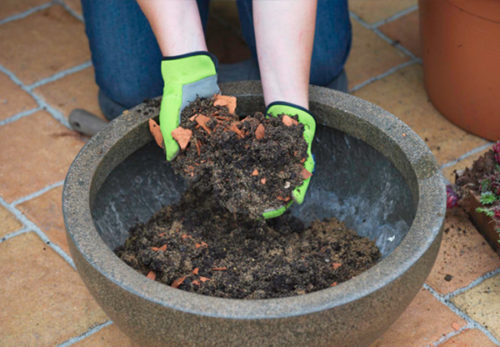
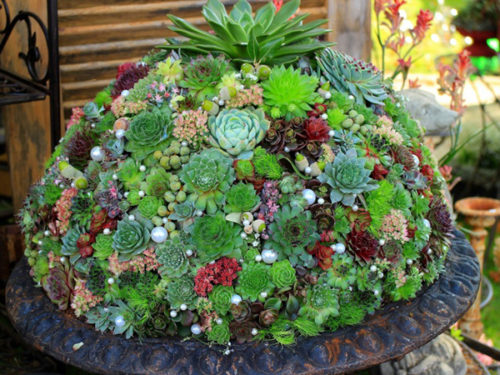
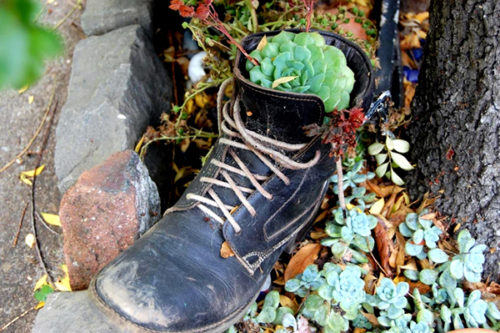
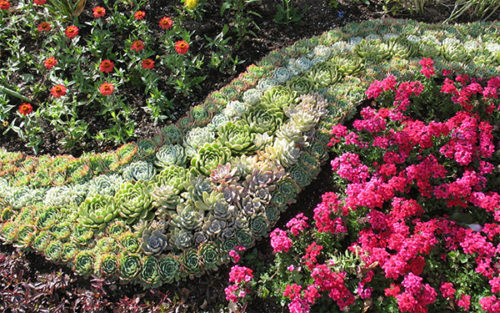
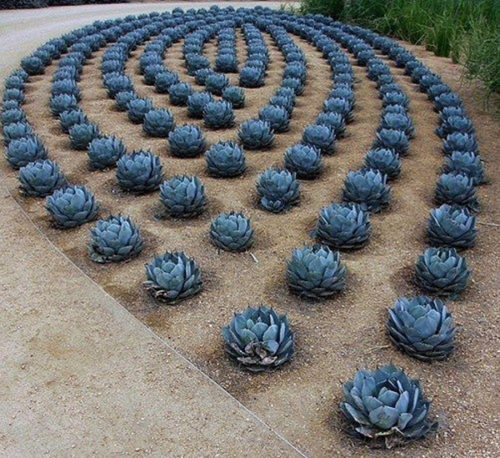
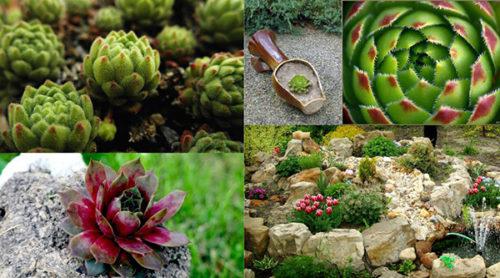













 Start a discussion ...
Start a discussion ...